The Freedom to row
It was sunny and cool that day in April 2019 when I found myself laid out in the bow compartment of a M4+, fighting to keep a point in a breeze that swept port to starboard across the course just off the beach at San Diego Crew Classic.
I’d been rowing and coxing for nearly 20 years but had never lined up for a 2k.
See, I learned to row at 23 with Capital Rowing Club in Washington, D.C. After LTR, I jumped at the chance to row with CRC’s club morning program – kind of like JV to the Club’s Competitive Program varsity status. As a masters club rower, sprint races were, and have always been, 1k. But staring down that course in San Diego, the buoyed lane lines stretched for an eternity, vanishing into the horizon.
Freedom Rows – a USRowing program “opening boathouse doors throughout the country to disabled veterans and members of the armed services” – had brought me to that place and time. Staring down the bow deck, a field of vision mere inches off the rippling surface of the dark water, four active duty and military vets sat behind me, stacked bow to stern. We’d been brought together by Coach Patrick Johnson, National Rowing & DC Sports Director at Athletes Without Limits (AWL) and, at the time, Rowing Director of Veteran Recruitment & Fitness at MedStar National Rehabilitation Network.
Patrick is a military vet, and we’ve known each other for years through our shared connection to DC Strokes Rowing Club. It is because of his on-going dedication that the AWL/DC Strokes/Veteran Leaders Integrated Rowing Team has grown to be one of the largest Freedom Rows programs in the United States.
I have to admit that I’ve had relatively little personal interaction with active duty military and veterans. My father was stationed in Germany in the 1950s, and in my early post-college days I gladly went to anti-war protests in D.C. Fresh out of art school, I didn’t understand yet that I could hold on to my pacifist morals AND support active duty troops and vets.
But living in D.C. during the early 2000s, through the infancy of the wars in Afghanistan and Iraq, I started to meet young soldiers, returned home after serving tours designed to topple the Taliban. They had stories of taking control of compounds, and securing Abu Ghraib (after the torture scandal). And our boathouse (Anacostia Community Boathouse) is just upstream from the Washington Navy Yard, so it was common for members of the Navy (or civilians working at the Navy Yard) to join our programs. That’s how I met an active duty nuclear submarine engineer who told me (as much as he could) about his work, and let me hold his dress sword.
The years have stretched on, and veterans have streamed through the boathouse as masters program members, members of Athletes Without Limits, and Medstar National Rehab programs. Perhaps most prominent among them was Rob Jones, who, while tasked with clearing IEDs in Afghanistan, was wounded by a land mine. The injury resulted in a left knee dis-articulation and a right above knee amputation of his legs. While at Walter Reed Army Medical Center for rehabilitation, he rolled into the boathouse and learned to row. He went on to row a mixed 2x at the 2012 Paralympics with Oksana Masters, bringing home a bronze. I remember not long after that seeing Rob, fitted with prosthetics, walk into the boathouse.
Which takes me back to San Diego, locked on to the stakeboat with a boatful of military guys behind me and Freedom Rows boats sitting in each of the other lanes, waiting for the flag to drop.
I guided them trough some deep breathing, called for blades to lock in, and last-second taps from bow to adjust our point and then we were off. Start 5, high 5, lengthen and go for 20, tick off the 500m markers, keep adjusting for wind, and the lead was ours. The course really did feel like it went on for an eternity. Out in the lead from the start, there was nothing to see but ripples on the water, and eventually, the finish line buoys. I was so proud of my guys. But I was also overwhelmed with emotion to be a part of this unique event, with rowers that are often overlooked by the masses at regattas. Each with an amazing story to tell about how life brought them rowing, and how rowing brought them to life.
It would be painting a rosy picture if I didn’t acknowledge here the high rates of suicide among veterans: 6,000 per year. 1.5 times higher than the non-Veteran population aged 18+. Included in these statistics are members of Freedom Rows programs – at least seven in 2020.
According to the American Foundation for Suicide Prevention, “There is no single cause of suicide among Veterans and Servicemembers, but by treating and preventing mental health and substance use conditions, addressing access to lethal means, and empowering Veterans and Servicemembers to live and thrive in their communities, we can save lives.”
Please consider supporting Freedom Rows and similar programming for veterans in your community, and across the country.
